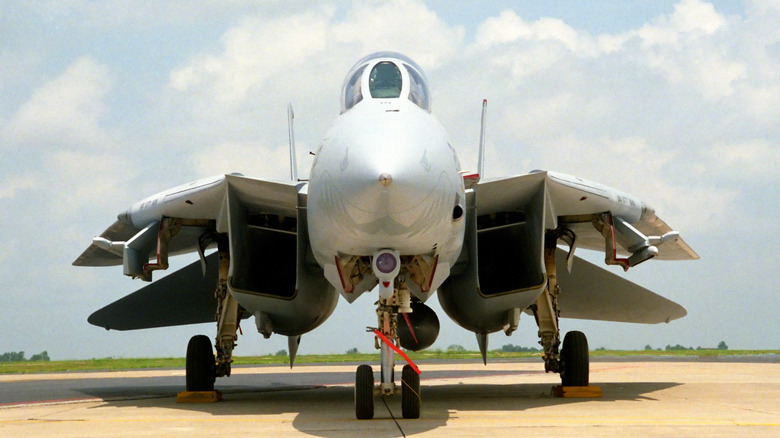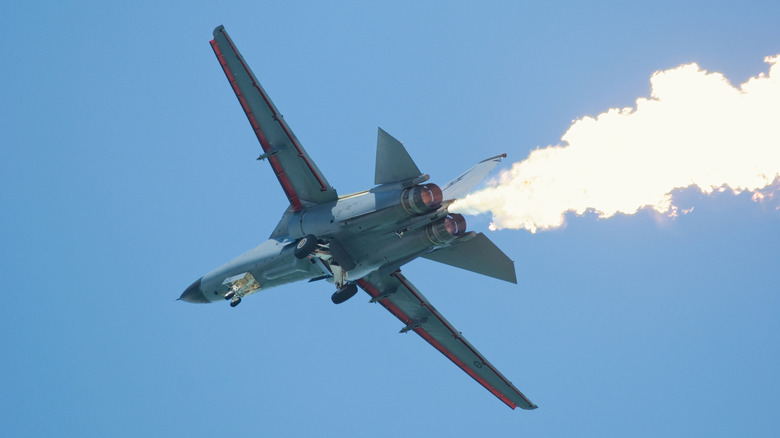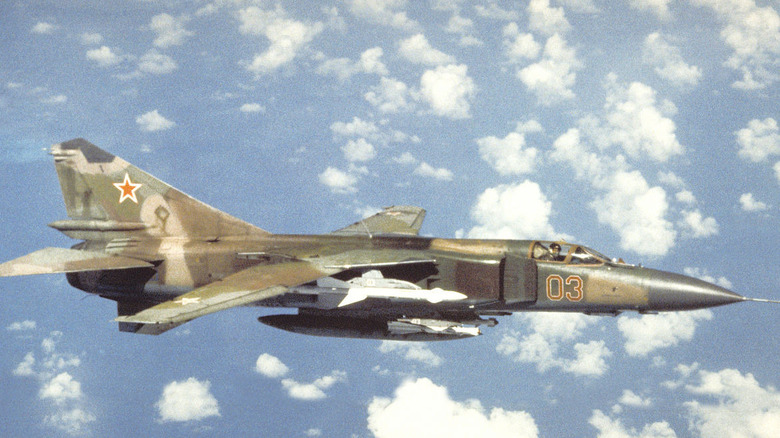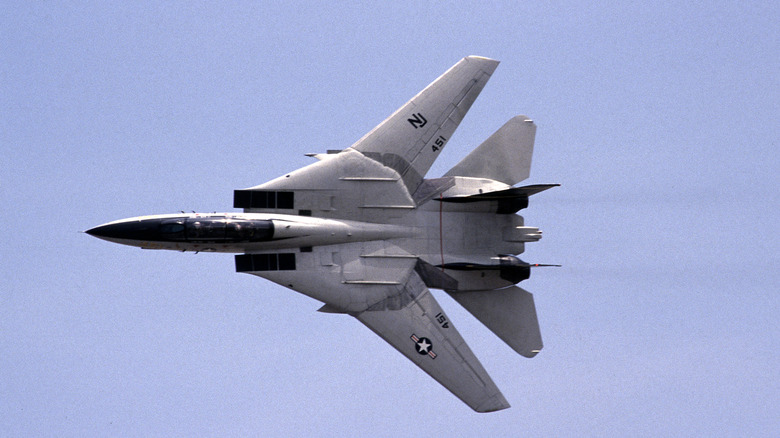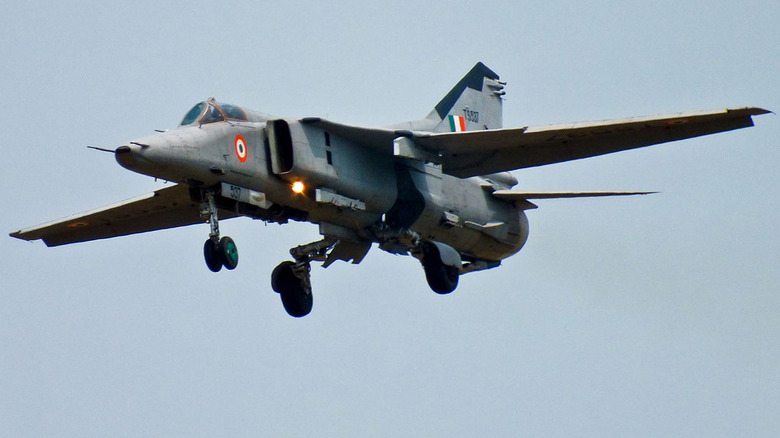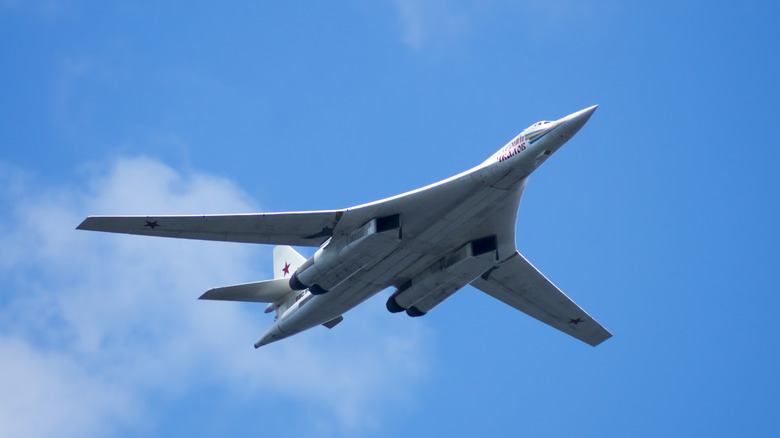5 Of The Latest Swing-Wing Fighter Jets To Enter Military Service
The winner-take-all nature of aerial combat means the slightest edge can be the difference between victory and death. Power, maneuverability, agility, armor, and armament were all key components of a successful fighter jet design.
The history of the jet age tells the tale of a science and industry that has grown exponentially in just a few short decades. Aircraft that were once made of wood and cloth became steel. Propellers turned into turbines, radial and rotary engines into jets, and the box wing became the biplane, triplane, and finally the monoplane.
The swing-wing fighter jet swept into the forefront of military aviation for a few reasons. One factor that enabled its innovation was the cutting-edge competition between the U.S. and the USSR for nothing less than global supremacy. In the spirit of eeking out the sliver of a millionth of a percent of a performance envelope over the enemy, engineers explored new ideas.
By the 1970s, early fourth-generation fighter platforms were emerging, and many of them featured swing-wing designs. Also known as variable-sweep or variable geometry, this feature allowed pilots to adjust the wings' angle to the craft's fuselage. This helped improve handling characteristics at various speeds. The theory worked, and several combat-proven aircraft deployed swing wings effectively.
Aircraft with swing wings weren't perfect. They were complex, required heavy additional equipment, introduced new failure points to air operations, and ultimately became outpaced by technological advancements. Their time has passed, but here are five of the latest swing-wing fighter jets to enter military service.
F-111 Aardvark
The F-111 Aardvark is amongst the most understated revolutionary aircraft of the 20th century. A product of the Cold War through and through, the Aardvark was a versatile aircraft that satisfied the needs of both the U.S. Navy and the U.S. Air Force — no small feat.
The Soviet Union shot down Francis Gary Powers' U-2 spy plane in 1960, garnering itself an intelligence bonanza while gleefully exposing the United States. The U.S.S.R. also tipped its hand, indicating that its surface-to-air capability exceeded American expectations. Secretary of Defense Robert McNamara initiated a program to develop an air and ground-strike platform to combat this development.
General Dynamics won the contract to produce the F-111 Aardvark in 1962. A key part of its design would be variable wings that could adjust in-flight– an aviation first. With wings fully extended, the Aardvark could take off and land with fewer than 2,000 feet of landing strip. With wings swept back, it could achieve stunning maximum speeds of more than twice the speed of sound, or Mach 2.0. All this was made possible at low altitudes thanks to terrain-reading radar, which helped the Aardvark fulfill its role as an all-weather attacker.
The prototype first flew in 1964, and the Air Force got its first Aardvark in 1967. By 1969, it was at the beginning of a production run that would ultimately deliver 562 F-111s, though the Navy variant was ultimately canceled. The Aardvark served in Vietnam and the Gulf War before retiring in 1998.
MiG-23 Flogger
The Aardvark was a first, but as was often the case during the Cold War, the enemy wasn't far behind. The MiG-23 Flogger was a third-generation jet fighter that entered active service in the various air forces of the Soviet Socialist Republics. It was designed to replace the MiG-21 Fishbed and was a contemporary of the Aardvark, as are most military aircraft with variable wings.
The Flogger was as much of a speed demon as the Aardvark, if not more so. Under optimal conditions, it could achieve an altitude of 60,000 feet and a speed of Mach 2.35. It performed multiple roles, including ground attack and reconnaissance. Among its generational improvements were more effective sensors and advanced radar systems, which provided the pilot with information allowing him to track enemy aircraft with greater efficacy. It could detect and deploy missiles against targets outside of visible range.
The MiG-23 proved wildly successful as a frame, though the Strategic Air Command & Aerospace Museum referred to its safety record as "challenging." It was quantity over quality for the swing-wing MiG-23. When you build over 5,000 airframes, you can lose some to accidents.
F-14 Tomcat
Perhaps the most famous variable-wing aircraft of all time, the F-14 Tomcat isn't just a plane. It's an American icon, a totem of the West in a swirling Cold War, and an inspiring twin-engined, variable-wing fighter that took aviation by storm.
Improvements in Soviet long-range attack capability inspired the Navy to develop a needs sheet for a fighter capable of launching from and defending aircraft carriers. The Tomcat would make its maiden test flight in late 1970. By 1972, the Navy was accepting its first deliveries. The initial version had a crew of two, a pilot and a weapons system officer. It could track and launch against multiple targets and knock down hostile aircraft over 100 miles distant.
The F-14 certainly earned some of its cache from Hollywood, being the star of 1986's "Top Gun". Silver screen plaudits aside, aviation buffs loved the Tomcat for its power, complex lines, enormous dimensions, and, of course, those cool folding wings.
The Navy invested in the F-14 for years, sparking the development of multiple variants of a successful aircraft, ending with the F-14D, which came out in the early 1990s. The Tomat enjoyed a long and storied career spanning four decades until the Navy retired it in 2006.
MiG-27 Flogger D/J
From a fame perspective, the F-14 Tomcat may have been the high-water mark, but the variable wing era was not yet over. The Soviets had an airframe in development around the same time as the F-14 that would become the MiG-27 Flogger, though it was something of a cheat.
You may have noticed that the MiG-23 and MiG-27 share a NATO codename. That is because the MiG-27 originated with the MiG-23. Swept-wing like its predecessor, the second Flogger was a ground-attack-based strike fighter beefed up for the mission. One change included a heavy-duty landing gear for operation from fields.
The MiG-27, powered by a single Tumansky R-29 B-300 engine with over 17,000 pounds of thrust, was a formidable aircraft. Despite being slower than the MiG-23, it had a respectable top speed of Mach 1.09 and an altitude ceiling of 46,000 feet. Its ability to carry about 20,000 pounds of ordnance into battle made it a significant asset. The Soviet Union operated over 600 MiG-27s, and while it didn't achieve the same export success as the MiG-23, it still left a mark. The Indian Air Force, for instance, operated some MiG-27s until their retirement in 2019.
Tu-160 Blackjack
A strategic bomber built by the Soviet Union, the Tu-160 Blackjack had the mission to execute bombing runs at low speeds and altitudes in addition to supersonic strikes. You know what helps with that? Wings that you can adjust based on your speed, which is why the Tu-160 ended up as a swept-wing design.
The Blackjack, which first took flight in 1981, had just a decade of service under its belt before the Soviet Union fell. It carries up to 12 Kh-15 missiles or six KH-55 nuclear cruise missiles, making it one potentially devastating aircraft. Though emerging in the age of stealth, the Blackjack was not invisible to radar. The Blackjack had a top speed of over Mach 2 and an excellent rate of climb. Unlike most aircraft on this list, the Tu-160 is far from retired. Russia persists in developing upgraded and modernized Tu-160s with improved capabilities, though getting them through the production process is a significant challenge for Russia.
Russia moved several away from the Ukrainian border in June 2025 to keep the few it has from damage in ongoing hostilities, indicating the value Russia places on the craft. There are estimated to be fewer than 20 in operation. Russia's few operable Tu-160s are nearly as valuable on the tarmac as in the air. They represent Russia's medium-range nuclear strike capability, a geopolitical sabre Russia loves to rattle.
